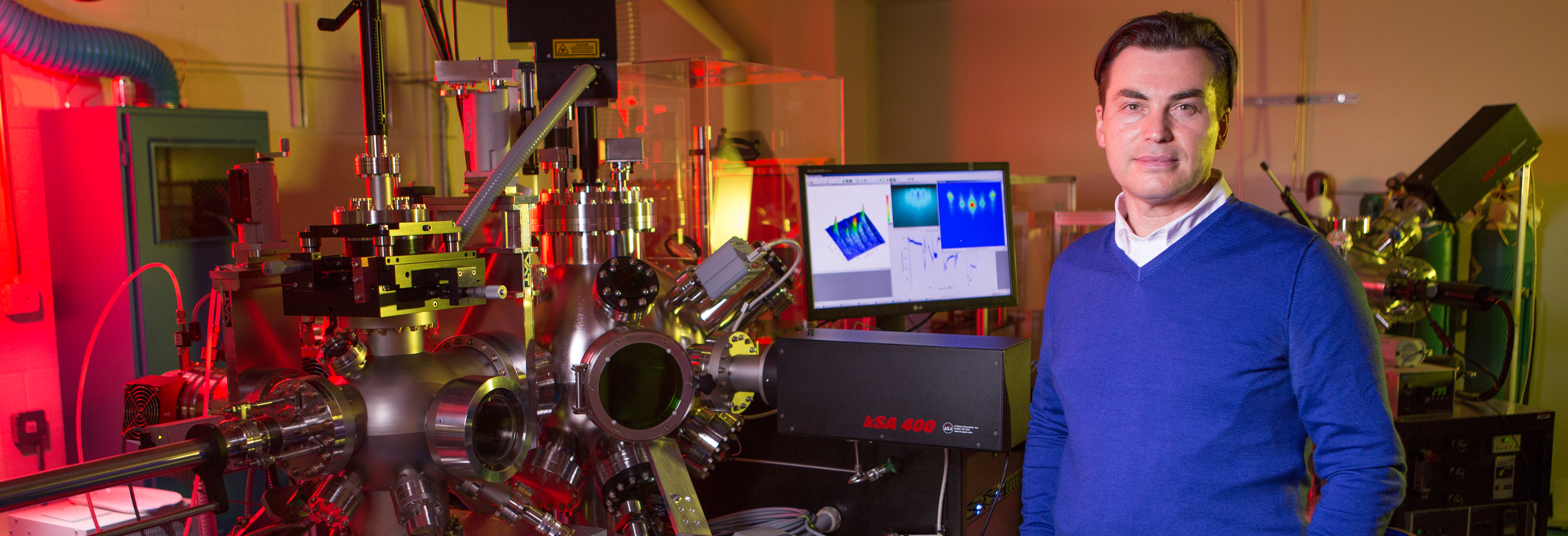Things we research and focus on.
Thin Film Growth
The main body of our system is a High-Vacuum (HV) laser Molecular Beam Epitaxy (laser MBE) apparatus to deposit thin films on a chosen substrate by the laser ablation of variety targets. HR RHEED is one of the most commonly used techniques for monitoring and controlling epitaxial growth by laser MBE. Since the specular beam of RHEED shows the oscillations during deposition with the period, which corresponds to a monolayer or bilayer in a two-dimensional (2D) layer-by-layer fashion growth, RHEED is quite useful to monitor the number of layers grown on the surface and overall quality/epitaxiality of growing film. Check out this Video-> Video about Pulsed Laser Deposition
2D electronic liquids
One of the major areas of research in the group is the creation of new artificial two-dimensional electron liquids (2-DELs) through interface engineering. During the epitaxial growth of two materials, one invariably creates an interface. Sometimes this interface exhibits interesting properties that are absent in its constituent materials, e.g. the presence of a metallic 2-DELs at the interface od two insulating system. In last decade, 2-DELs at the interface of transition metal oxides (mostly insulating) have emerged as ideal testbed for envisioning and investigating new electronic phases of matter. Many counterintuitive electric ground states can co-exist in this ultrathin layer.
Superconductivity exotic magnetic and orbital states
Interfaces between complex oxides offer a great playground for pursuing exotic electronic, magnetic, and orbital states. To achieve this goal, we combined our state-of-the-art fabrication techniques with the concept of "geometrical lattice engineering" to establish designer heterostructures and superlattices. A brief outlook of this direction is summarized in above figure. For more interest, please refer to the attached reference.
Contact Us
Address
136 Frelinghuysen Rd,Piscataway, NJ 08854
United States of America
